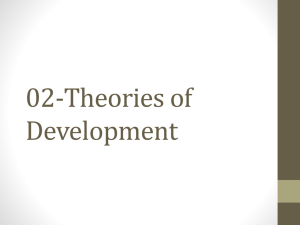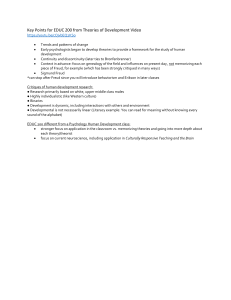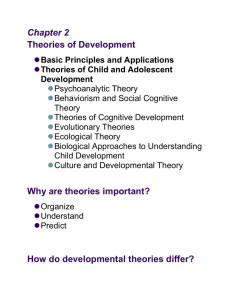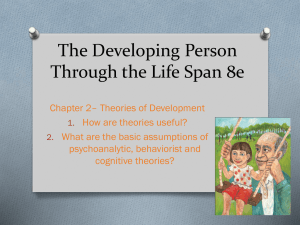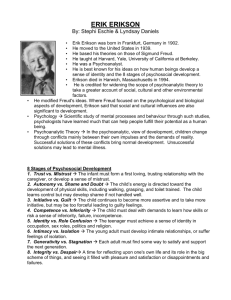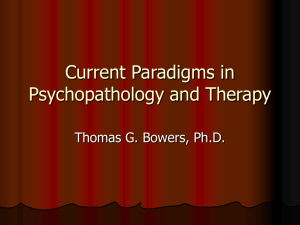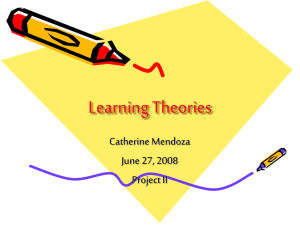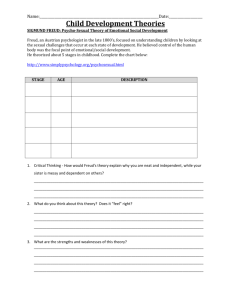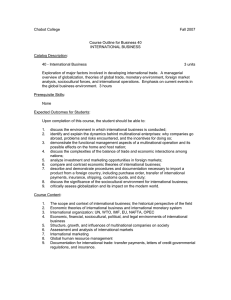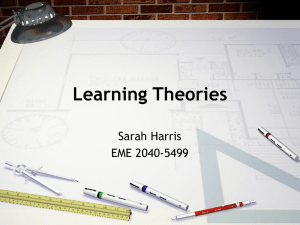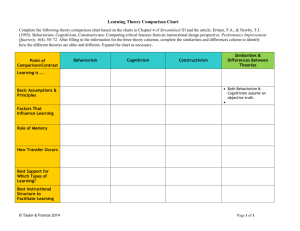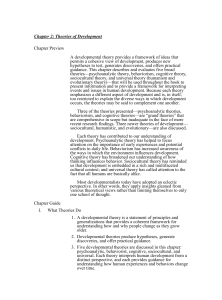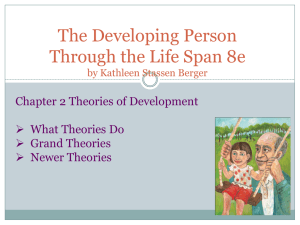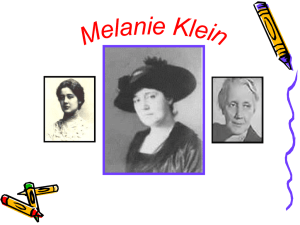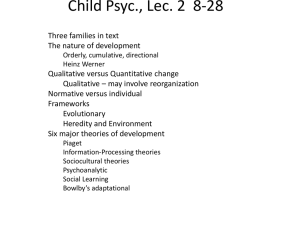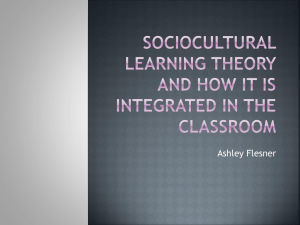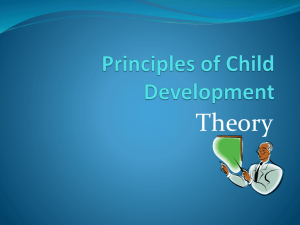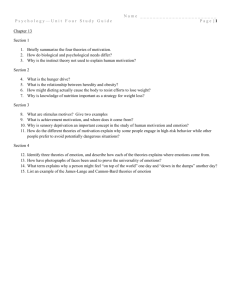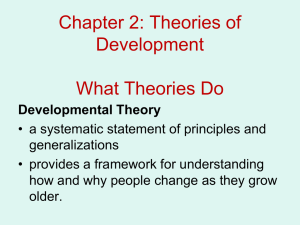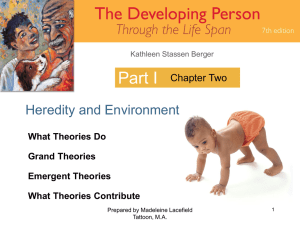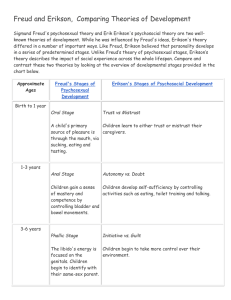Chapter 1
advertisement
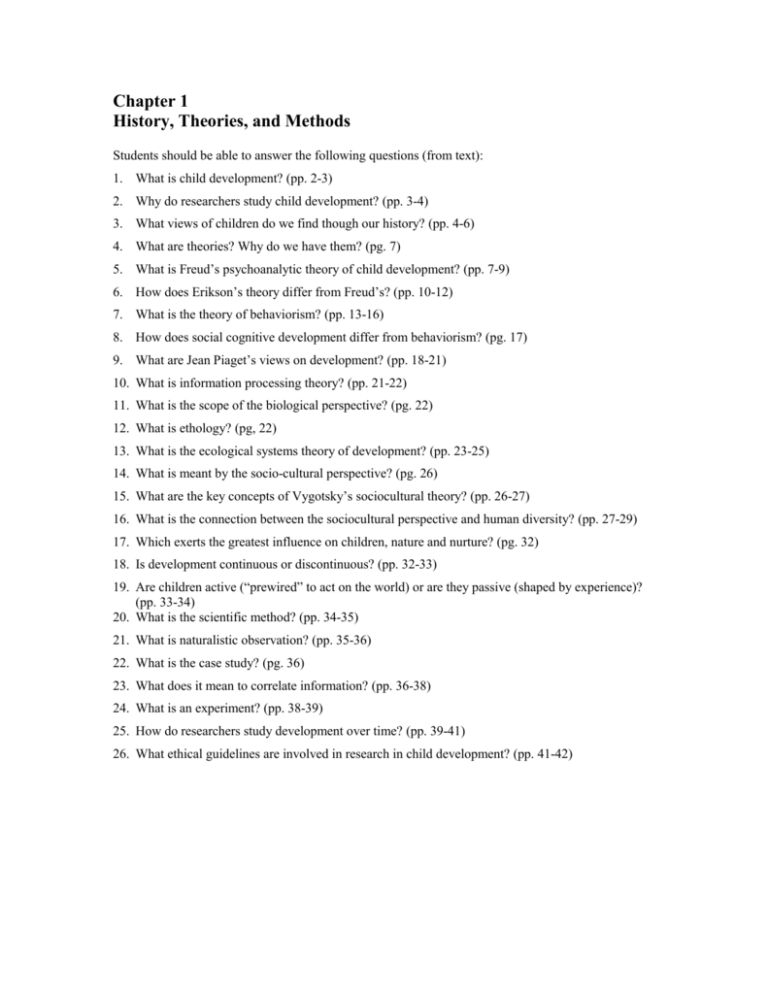
Chapter 1 History, Theories, and Methods Students should be able to answer the following questions (from text): 1. What is child development? (pp. 2-3) 2. Why do researchers study child development? (pp. 3-4) 3. What views of children do we find though our history? (pp. 4-6) 4. What are theories? Why do we have them? (pg. 7) 5. What is Freud’s psychoanalytic theory of child development? (pp. 7-9) 6. How does Erikson’s theory differ from Freud’s? (pp. 10-12) 7. What is the theory of behaviorism? (pp. 13-16) 8. How does social cognitive development differ from behaviorism? (pg. 17) 9. What are Jean Piaget’s views on development? (pp. 18-21) 10. What is information processing theory? (pp. 21-22) 11. What is the scope of the biological perspective? (pg. 22) 12. What is ethology? (pg, 22) 13. What is the ecological systems theory of development? (pp. 23-25) 14. What is meant by the socio-cultural perspective? (pg. 26) 15. What are the key concepts of Vygotsky’s sociocultural theory? (pp. 26-27) 16. What is the connection between the sociocultural perspective and human diversity? (pp. 27-29) 17. Which exerts the greatest influence on children, nature and nurture? (pg. 32) 18. Is development continuous or discontinuous? (pp. 32-33) 19. Are children active (“prewired” to act on the world) or are they passive (shaped by experience)? (pp. 33-34) 20. What is the scientific method? (pp. 34-35) 21. What is naturalistic observation? (pp. 35-36) 22. What is the case study? (pg. 36) 23. What does it mean to correlate information? (pp. 36-38) 24. What is an experiment? (pp. 38-39) 25. How do researchers study development over time? (pp. 39-41) 26. What ethical guidelines are involved in research in child development? (pp. 41-42)
